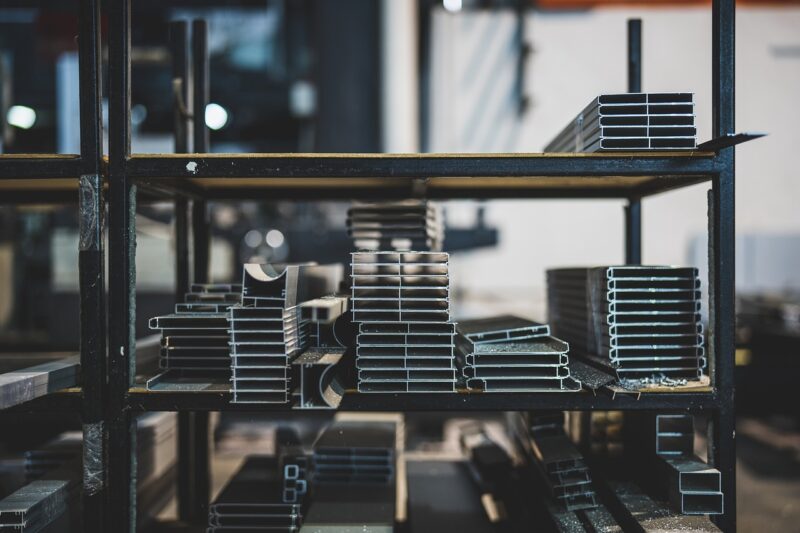The Power of Iron in Industrial Revolution: Why This Metal Was the Backbone of Modern Society
November 14, 2024

The Industrial Revolution, a period of profound change from the late 18th century to the early 19th century, marked a significant turning point in human history. Among the many forces that drove this remarkable transformation, iron emerged as a pivotal player. Iron not only fueled technological advancements but also reshaped transportation, architecture, manufacturing, and daily life. Understanding the role of iron in the Industrial Revolution helps to appreciate how this metal became the backbone of modern society.
1. The Rise of Iron in Industry
Iron has been utilized by humanity for millennia, but the onset of the Industrial Revolution signaled a major shift in its use and production. The early stages of iron smelting used charcoal as a fuel, leading to relatively low-quality iron resources. However, with the advent of new technologies like the blast furnace, the quality and quantity of iron production surged dramatically.
The blast furnace, developed in the 18th century, allowed for the production of cast iron in large quantities, contributing to the unprecedented growth of industries such as construction and machinery.
2. Iron’s Impact on Transportation
Before the Industrial Revolution, transportation relied heavily on horse and wagon, which quickly became inadequate for the growing demands of cities and trade. Iron played a transformative role in reshaping transportation networks:
– Railroads: The introduction of iron rails in the early 19th century made train travel efficient and practical. Trains could transport goods and people faster than horse-drawn carts, leading to increased commerce and interaction between previously isolated regions.
– Steamships: Iron was essential for the construction of steamships. The strength and durability of iron allowed ships to carry heavier loads and navigate across oceans, transforming global trade and travel.
3. Iron in Architecture and Engineering
The use of iron in architecture marked the birth of modern construction techniques. The strength of iron supported larger structures and innovative designs that were previously impossible. Notable examples include:
– The Crystal Palace: Built for the Great Exhibition of 1851 in London, this structure showcased the potential of iron and glass in architecture, embodying the spirit of the Industrial Age.
– Bridges: The construction of iron bridges, such as the Iron Bridge built in 1779, revolutionized engineering. These designs allowed for longer spans and greater load-bearing capacities compared to traditional stone structures.
4. The Manufacturing Revolution
Iron was the heart of the manufacturing revolution. Its versatility enabled various industries to flourish:
– Tools and Machinery: The production of iron tools and machinery facilitated agricultural and industrial processes, leading to enhanced productivity. This shift enabled farmers to cultivate land more efficiently and manufacturers to produce goods at unprecedented rates.
– Weapons: The mass production of iron weaponry changed warfare dynamics, with armies equipped with superior firearms and artillery.
5. Societal Changes Driven by Iron
The effects of iron production and utilization transcended mere industry and engineering; they deeply impacted societal structures and daily life. As factories proliferated, the dynamics of labor changed:
– Urbanization: The demand for labor in iron and steel industries attracted people to urban centers, leading to rapid urbanization. Cities grew around factories, reshaping social and economic landscapes.
– Worker Activism: The harsh working conditions in iron and steel factories also sowed the seeds of labor movements, advocating for workers’ rights, better wages, and improved workplace safety.
6. The Environmental Impact of Iron Production
While iron was instrumental in forging modern society, it is essential to acknowledge the environmental implications of its production:
– Deforestation: The need for charcoal in early iron smelting led to significant deforestation, with lasting impacts on local ecosystems.
– Pollution: Iron production contributed to the rise of air and water pollution, creating health hazards for workers and residents living near factories.
7. Legacy and Continuation of Iron Use
The significance of iron post-Industrial Revolution cannot be understated. Even today, iron and its alloys remain fundamental in various industries:
– Construction: Modern skyscrapers and infrastructure still rely on steel, an alloy of iron, due to its strength and versatility.
– Transportation: Iron is crucial in the automotive and aerospace industries, underpinning vehicles and aircraft construction.
Conclusion
Iron’s role in the Industrial Revolution was not merely as a resource but as a transformative force that shaped the very fabric of modern society. From revolutionizing transportation to enabling stunning architectural feats, iron stands as a testament to human ingenuity and the unyielding quest for progress. Understanding the impact of iron is key to comprehending the broader narrative of industrial advancement and societal evolution. In retrospect, iron was more than just a metal; it was the backbone that supported the complex structure of modern civilization.








